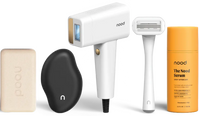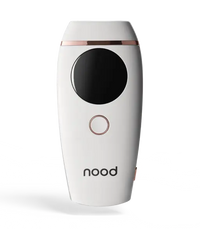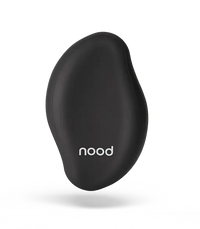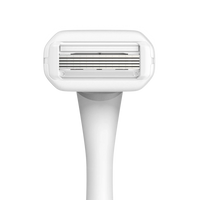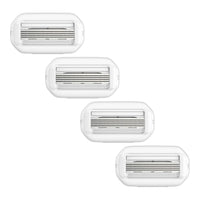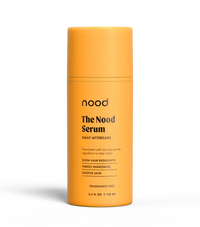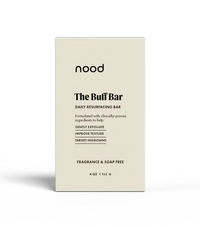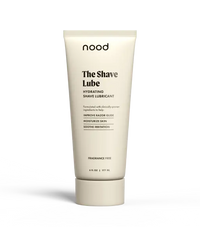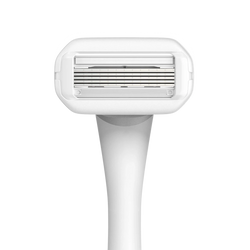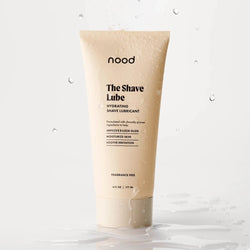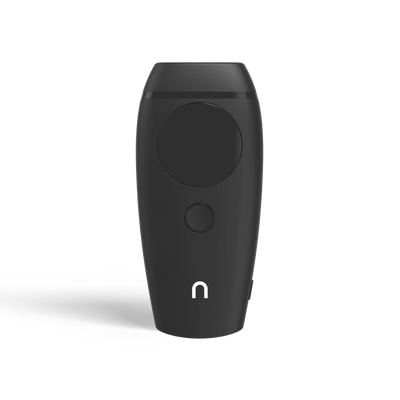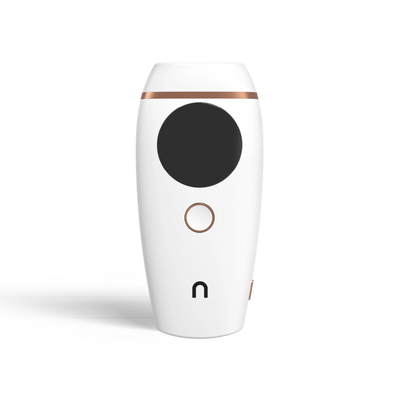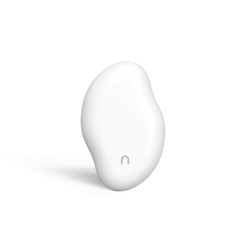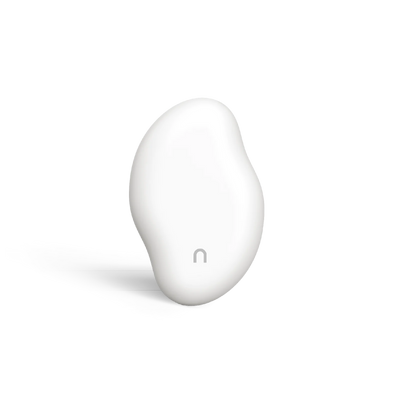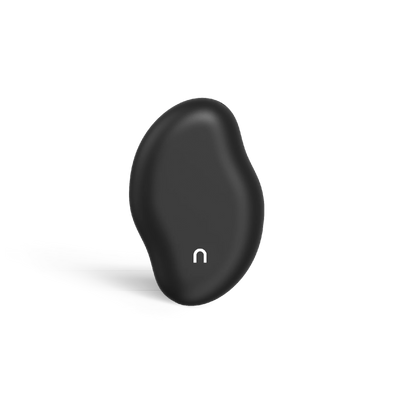
13 Hair Removal Methods: How They Work + Pros & Cons
We love laser hair treatments and IPL to get you closer to permanent hair removal, but we also want you to have info on other hair removal methods that may work for you.
What are the benefits of hair removal? The benefits of hair removal include a boost in confidence from tackling unwanted hair. With some methods, you may even improve you overall skin condition.
Let’s dig into the pros and cons of all your options so you don’t have to play guessing games with your body hair.
View this post on Instagram
Table of Contents
1. Shaving
How it works: Shaving works by using a razor to cut hair at the surface of your skin. Shaving wet is the go-to for larger areas, but electric razors are another option for a quick, dry shave.
For best results:
- Use a shaving cream to prevent irritation and cuts. (Hair conditioner works in a pinch!)
- Exfoliate beforehand. We love The Revealer for daily exfoliation no matter how you tackle body hair.
- Take care of your razors. Rinse them well and dry them completely. Ditch dull or rusty razors.
Pros:
- It’s cheap in the moment. If you’re not going for a high-end razor or electric trimmer, you can pick up a pack of disposable razors practically anywhere.
- It’s quick.
- There’s really no learning curve.
Cons:
- The cost can add up over time. If this is your go-to method, you already know the cute razors with high-quality replacement blades can make a dent in your wallet.
- It’s very temporary. Expect results to last 3 days max before things get prickly.
- Side effects like razor burn and ingrown hairs are common.
- You can nick your skin, too. That sets you up for that embarrassing moment where someone points out that tiny piece of toilet paper on your face or elsewhere.
2. Dermaplaning
How it works: Dermaplaning works by using a small blade to remove facial hair.
For best results:
- Wash and completely dry your face.
- Keep your skin taut as you work the device down the target area.
- Avoid going over areas more than once with an at-home tool.
Pros:
- Results last longer than shaving. Expect to go a few weeks between treatments.
- It could improve your skin tone and texture since it’s basically a form of microdermabrasion.
- At-home devices are safe and just as effective.
Cons:
- Dermaplaning isn’t advised during active acne outbreaks.
- Some people report skin irritation and itching post-treatment.
- It can get expensive. You’ll need to replace blades for at-home tools.
3. Plucking/Tweezing
How it works: Plucking or tweezing works by pulling hair at the root, one hair at a time.
For best results:
- Choose a pair of slanted tweezers to keep hairs from breaking as you pluck.
- Pull hairs out an angle. This can reduce your risk of ingrown hairs.
- Keep tweezers clean and sterilized to avoid infection — quick dip in rubbing alcohol or hydrogen peroxide works.
Pros:
- It’s precise and easy to target stray hairs.
- It’s cheap. All you need is a pair of tweezers.
- Results last longer than shaving. Expect a break from new hair growth for at least a few weeks.
Cons:
- You can take care of an errant chin hair in seconds, but tweezing is time-consuming for larger areas.
- It can be painful, particularly in sensitive areas.
- Possible side effects include skin irritation and ingrown hairs.
4. Threading
How it works: Threading involves lifting hairs using a twisted cotton or polyester thread. It’s common for taming bushy eyebrows and peach fuzz. Results typically last at least 2 weeks.
For best results:
- Keep it natural. Resist the urge to pluck before your appointment.
- Arrive with a clean, makeup-free face.
- Communicate. If you’re doing your brows, have a shape in mind. Be clear about expectations.
Pros:
- It’s precise. An experienced esthetician can shape a beautiful set of brows.
- It won’t take as long as tweezing since you can remove a row of hairs at a time.
- Threading is gentler on your skin than tweezing or waxing.
Cons:
- It’s not DIY-friendly. You’ll need to go to the salon for sessions.
- It can be painful. You’re still pulling hair at the root here.
- Ingrown hairs and temporary redness are possible.
5. Epilating
How it works: Epilating removes hair at the root using an electrical device. Some devices are marketed for facial hair, but most are best for larger areas.
For best results:
- Exfoliate before each session.
- Use moisturizing lotions after to reduce skin irritation.
- Start on a lower setting to see what you can handle.
Pros:
- A good epilator can last years. That saves you money on salon treatments.
- Results last longer than shaving. Expect smooth skin for at least a few weeks.
- The ideal hair length is 5mm. That’s shorter than the recommended length for waxing.
Cons:
- It can be painful.
- There’s a learning curve. It can take practice to get used to positioning your device for best results.
- Side effects like ingrown hairs and skin inflammation are possible.
6. Waxing
How it works: Waxing works by applying hot wax to target areas in the direction of hair growth. You then quickly remove the wax in the opposite direction to pull hair at the root. Chaos ensues. We’re kidding — mostly. This part can be painful.
For best results:
- If you’re going the salon route, check the ratings before you make an appointment.
- Worried about the pain? Take an over-the-counter pain reliever before your wax.
- Wait for regrowth. Hair should be about a quarter-inch long for a successful session.
Pros:
- You don’t have to worry about hair type or skin colors. Waxing is a hair removal option that works for most.
- You can do it at home with a DIY kit — but, maybe leave Brazilians to the pros.
- Results last up to 3-4 weeks. That’s pretty good if you’re used to shaving daily.
Cons:
- It hurts. Waxing is one of the more painful hair removal treatments, especially if you target sensitive parts like your underarms or bikini area.
- Skin burns, infection, and skin discoloration are all possible if you visit a lower-quality salon.
- Compared to laser, you’re not doing anything to inhibit hair growth, so ingrown hairs are possible.
7. Sugaring
How it works: Sugaring works a lot like waxing and you can expect similar results. You just use a sugar solution instead of hot wax.
For best results:
- Exfoliate before sessions.
- Apply the solution to clean, dry skin in the opposite direction of hair growth.
- Remove your strips in the same direction of hair growth.
Pros:
- It’s cheap. You can make a DIY solution at home using sugar, lemon juice, and water.
- The solution is applied at room temperature. That reduces your risk of hot wax burns.
- Things still get sticky, but the solution is easier to rinse off than bits of cooled wax.
Cons:
- It’s not as painful as traditional waxing, but it’s not a cakewalk, either.
- If you have sensitive skin, it’s best to see a professional for sessions.
- Skin irritation and ingrown hairs are possible either way.
8. Hair Erasers
How it works: Hair erasers claim to use a crystalline surface to slough away existing hair.
For best results:
- Avoid intense exfoliating before giving this one a whirl.
- Try a test patch to see how your skin reacts.
- Rub the eraser against your skin in a circular motion without too much force.
Pros:
- You may see some light skin exfoliation.
- The erasers are pretty cheap and reusable for up to a year.
- They’re easy to bring along anywhere you go.
Cons:
- It may be a gimmick. Reviews suggest inconsistent results, with much of the fanfare limited to TikTok.
- It seems to work better the harder you press, but there’s an increased risk of skin irritation that way.
- It’s not very efficient. Shaving is faster and likely yields better results.
Basically…
9. Depilatory Creams
How it works: Depilatory creams contain chemicals that dissolve hair at the surface of the skin. You slather them on, then wipe them away. Expect results to last 2-3 days.
What is the difference between depilation and epilation? The difference between depilation and epilation is that depilation removes the hair at the surface. Epilation goes down to the follicle.
For best results:
- Use hair removal creams exactly as directed to avoid skin irritation.
- Sensitive skin types should try a test patch first.
- If you feel a burning sensation, rinse off right away.
Pros:
- They’re easy. This is true DIY hair removal.
- They’re affordable. The big brands are available over-the-counter at most drug stores.
- Your skin may feel smoother post-treatment compared to shaving.
Cons:
- They’re smelly. We’ll say 2 parts wet dog, 1 part rotten egg.
- Coarse hair types may not respond as well.
- You’re working with chemicals here. You may experience some skin irritation or redness post-treatment.
10. Prescription Hair Growth Inhibiting Creams
How it works: Prescription topical creams like Vaniqa (eflornithine) work by blocking enzymes found in your hair follicles. The result is slowed hair growth over time.
For best results:
- These creams are safe for facial hair in women only. Use creams as directed.
- Apply creams to clean, dry skin.
- Avoid makeup and other skin products until the cream has dried completely.
Pros:
- You’ll need to see a doctor for the initial prescription and refills, but that means you’ll be under your physician’s care in case of side effects.
- Slower regrowth means an easier time with regular maintenance of unwanted facial hair.
- Once you see results, you can expect them to last up to 8 weeks.
Cons:
- This isn’t a hair removal method. You’ll still need to get rid of existing unwanted hair.
- Results are slow. It can take at least a month to see reduced hair regrowth.
- Side effects include skin irritation, acne, and dry skin.
11. Electrolysis
How it works: Electrolysis works by sending electric currents into targeted follicles through a fine probe. This process damages follicles at the root to prevent regrowth.
For best results:
- Book with a board-certified dermatologist or electrologist.
- Let your hair grow. Electrolysis sessions require at least 1/8th of an inch of hair regrowth.
- Don’t skip treatments.
Pros:
- This is the only FDA-approved method of permanent hair removal available.
- That means no maintenance sessions when you’re all done.
- It’s more effective than laser for darker skin colors. In fact, it works for all skin tones and hair colors.
Cons:
- It can be painful. Talk to your provider about topical creams if you’re worried.
- Electrolysis is expensive. You’ll be charged by the hour, so small areas like the upper lip are more budget-friendly.
- It’s time-consuming, especially with larger areas.
12. Laser Hair Removal
How it works: Laser hair removal works by targeting the pigment, or melanin, at the hair follicles with a heated laser. This limits hair regrowth over time.
For best results:
- Skip the harsh chemicals, practice good sun care, and exfoliate before treatments.
- Put away the tweezers. You don’t want to pull hair at the root in between session.
- Treatments work best with an obvious contrast between your hair and your skin. Longer wavelengths may work better with darker skin, but seek out highly-rated providers.
Pros:
- You may see results with just one treatment.
- Sessions are shorter compared to electrolysis treatments.
- Many enjoy up to 80% permanent hair removal and reduction post-treatment. That makes laser popular for women with PCOS and stubborn areas like pubic hair.
Cons:
- Laser can be expensive depending on the number of sessions you need to get hair-free.
- It’s way less painful than electrolysis or waxing, but you may experience some discomfort. Treat post-treatment irritation with an aloe gel like The Reviver.
- You need to shave. It sounds like an annoying extra step, but it allows the laser to see your hair follicles better.
View this post on Instagram
13. At-Home IPL Hair Removal
How it works: The premise of at-home IPL is similar to laser treatments. Your at-home device just uses a broadband pulsed light instead of a single focused laser.
For best results:
- Exfoliate.
- Shave first.
- Work with a clean, dry area.
Pros:
- It’s less painful than professional laser treatments. Honestly, you probably won’t feel much of anything as you go after those armpits.
- It’s convenient. You don’t need to leave your house to flash your bikini line. You don’t even need to leave your couch if your show ended on a cliffhanger.
- Your budget will thank you. You pay a one-time fee for your device vs. paying for sessions every time you need one.
Cons:
- It’s not for everyone. IPL won’t work with grey, red, or blonde hair and very dark skin.
- You’ll need touchup sessions to target new hair during active growth cycles.
- Your friends could get jealous by all of this effortless hair removal.
Finding the Best Hair Removal Method For You
The best hair reduction method for you really depends on your end game. If you want affordable, convenient, long-term, even permanent hair removal, we’ve got you.
Say goodbye to unwanted hair in 8 weeks or less with The Flasher 2.0. Love the idea of a one-stop shop for all of your exfoliating and skin soothing needs? We do, too. Grab a The Noodist Kit for a combo deal on all 3 of our favorite products.
The Noodist Pro Kit

$507.00
Our bestselling hair removal products, now all in one bundle.… read more

